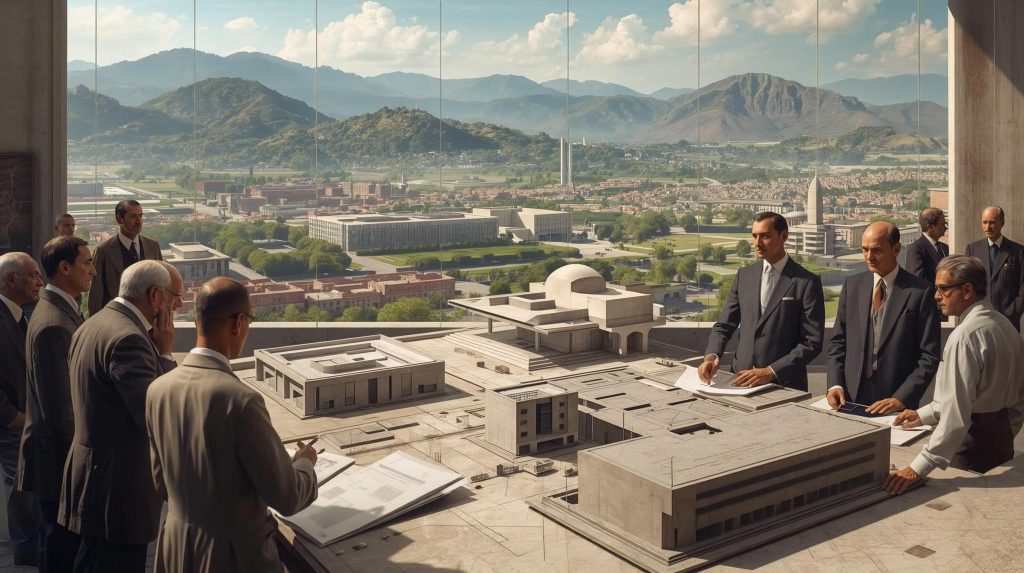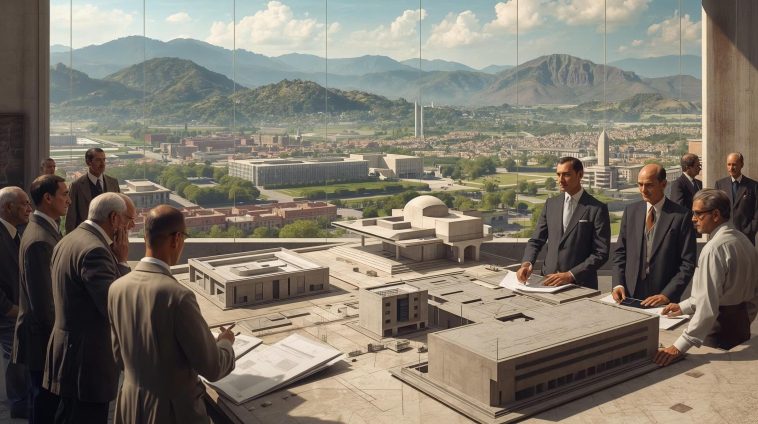Chandigarh, India’s first planned city, stands as a testament to modernist architecture and urban planning. Designed in the 1950s, it reflects a bold vision for a post-independence India.
While Swiss-French architect Le Corbusier is often credited as the chief architect, the city’s creation was a collaborative effort involving multiple key figures.
This article delves into the architects who shaped Chandigarh, their contributions, and the lasting impact of their work.
The Vision Behind Chandigarh
In 1947, following India’s independence and the subsequent partition, the state of Punjab was left without a capital. The Indian government decided to construct a new city that would embody the aspirations of a modern nation. Prime Minister Jawaharlal Nehru envisioned a city that would reflect the nation’s progressive ideals. To realize this vision, the government sought the expertise of renowned architects.

Le Corbusier: The Mastermind of Chandigarh’s Plan
Le Corbusier, born Charles-Édouard Jeanneret-Gris, was a Swiss-French architect who revolutionized modern architecture. In 1950, he was commissioned to design the master plan for Chandigarh. His approach was rooted in principles of functionality and simplicity, aiming to create a city that was both efficient and aesthetically pleasing.
Key Contributions:
- Master Plan: Le Corbusier’s grid-based layout organized the city into sectors, each serving a specific purpose, such as residential, commercial, and institutional areas.
- Capitol Complex: He designed the Capitol Complex in Sector 1, which houses the Legislative Assembly, Secretariat, and High Court. This area is a UNESCO World Heritage Site, showcasing his architectural prowess.
- Architectural Language: Le Corbusier introduced the use of concrete and steel, along with his signature pilotis (supports), flat roofs, and open floor plans, which became characteristic of Chandigarh’s buildings.
His work in Chandigarh is considered a significant achievement in modernist architecture, influencing urban planning worldwide.
Pierre Jeanneret: The Unsung Hero of Chandigarh
While Le Corbusier laid the foundation, Pierre Jeanneret, his cousin and collaborator, played a crucial role in bringing the vision to life. Appointed as the Chief Architect of Chandigarh in 1955, Jeanneret was responsible for overseeing the city’s architectural development.
Key Contributions:
- Civic Architecture: Jeanneret designed several significant buildings, including the Gandhi Bhawan and the Punjab University Library, which are celebrated for their architectural innovation.
- Housing Projects: He was instrumental in designing various housing complexes, ensuring they met the needs of the city’s residents while maintaining aesthetic harmony.
- Furniture Design: Jeanneret also contributed to the design of functional furniture used in government buildings, which have become iconic over time.
His dedication to the project and his architectural contributions have left an indelible mark on Chandigarh’s landscape.
Other Key Contributors
Maxwell Fry and Jane Drew
This British husband-and-wife team was responsible for the initial planning and design of Chandigarh. Their work laid the groundwork for the city’s development, focusing on creating a functional and sustainable urban environment.
Pierre Jeanneret’s Team
In addition to his own contributions, Jeanneret worked with a team of Indian architects and engineers, including Jugal Kishore Chowdhary, Bhanu Pratap Mathur, and Agya Ram. Together, they played a pivotal role in executing the city’s architectural plans.
Architectural Highlights of Chandigarh
- Sectors: The city is divided into sectors, each designed to be self-sufficient with its own markets, schools, and parks. This planning promotes a balanced urban lifestyle.
- Open Hand Monument: Located in the Capitol Complex, this symbol represents the city’s motto, “Open to God, Open to People.” It embodies the ideals of peace and reconciliation.
- Rock Garden: An innovative garden created by Nek Chand, featuring sculptures made from industrial and urban waste, reflecting the city’s embrace of creativity and sustainability.
Legacy and Recognition
Chandigarh’s unique blend of modernist architecture and urban planning has garnered international acclaim. In 2016, the Chandigarh Capitol Complex was designated a UNESCO World Heritage Site, acknowledging its architectural significance. Wikipedia
The city’s design continues to influence urban planning and architecture, serving as a model for cities worldwide.
Conclusion
The creation of Chandigarh was a collaborative effort that brought together visionary architects from different backgrounds. Le Corbusier’s master plan provided the framework, while Pierre Jeanneret and others contributed to its realization. Together, they created a city that embodies the aspirations of a modern India, blending functionality with aesthetic appeal.
Chandigarh stands as a testament to the power of thoughtful urban planning and architectural innovation, continuing to inspire future generations.


